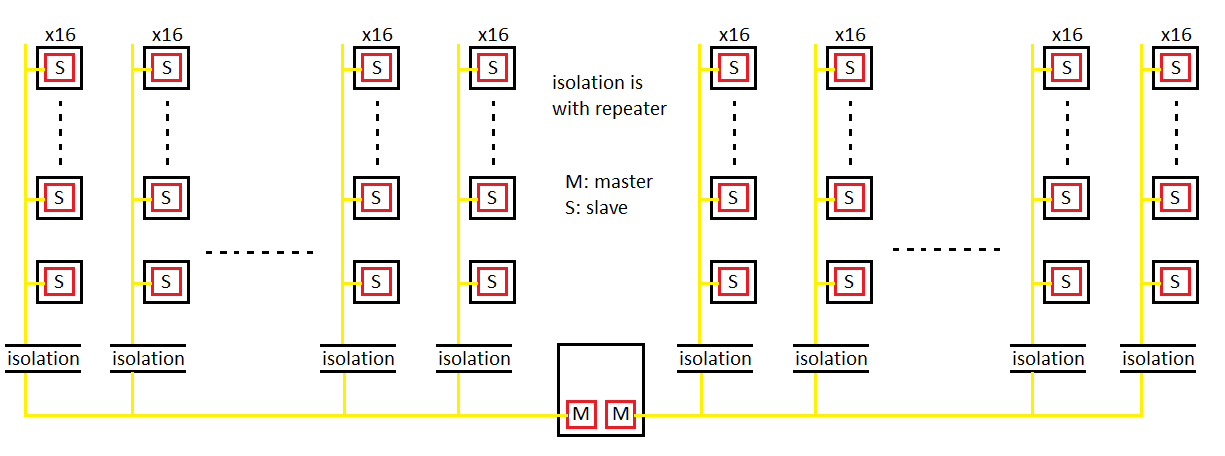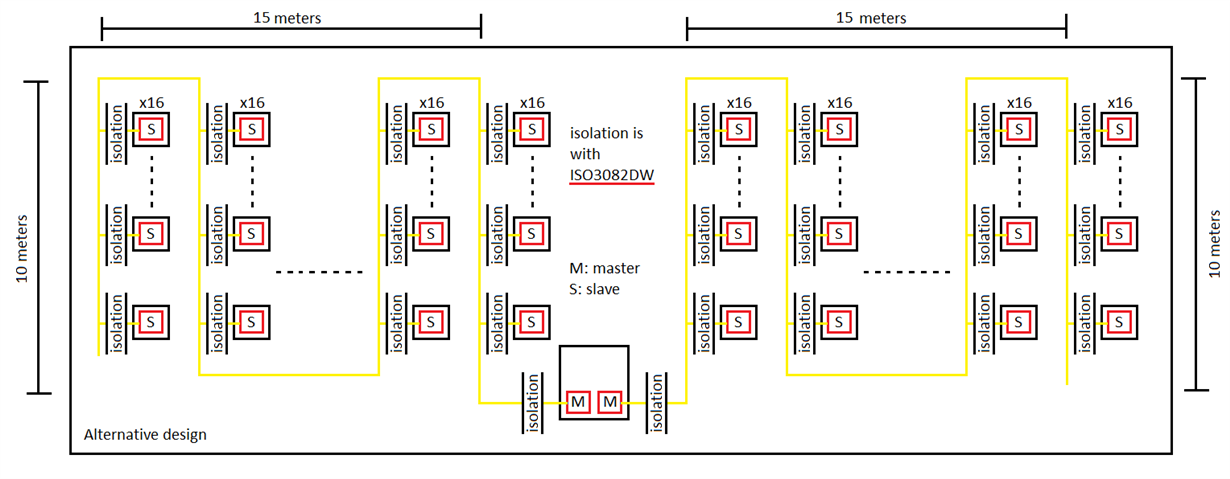Other Parts Discussed in Thread: ISO3082
In my project i'll use modbus protocol for serial communication. There are more than 320 slaves which seperated equally in 2 groups(i attached a pic to make it clear). Every 16 slaves are powered from the same supply and isolated from others galvanically(Master'll be isolated from all the slaves) to make it robust. Isolation'll be achieved with TIDA-00333. My first question is if there is a problem in this architecture?
Secondly I want to synchronise all the slaves via 10ms period pulses that are derived from master microcontroller. How can i achieve a robust synchronisation(what type of line, single or differential signal, where to isolate)?


